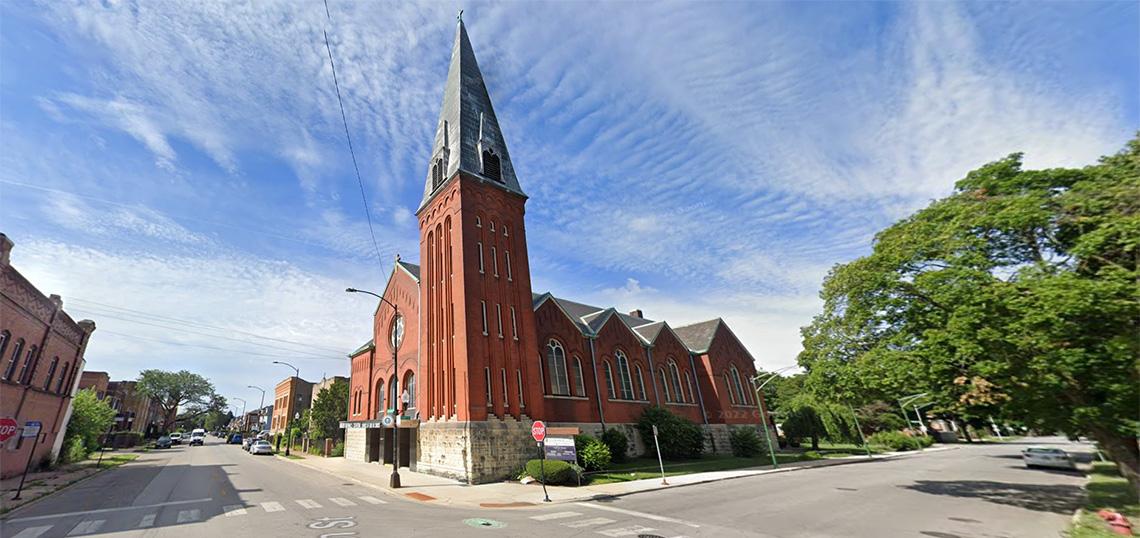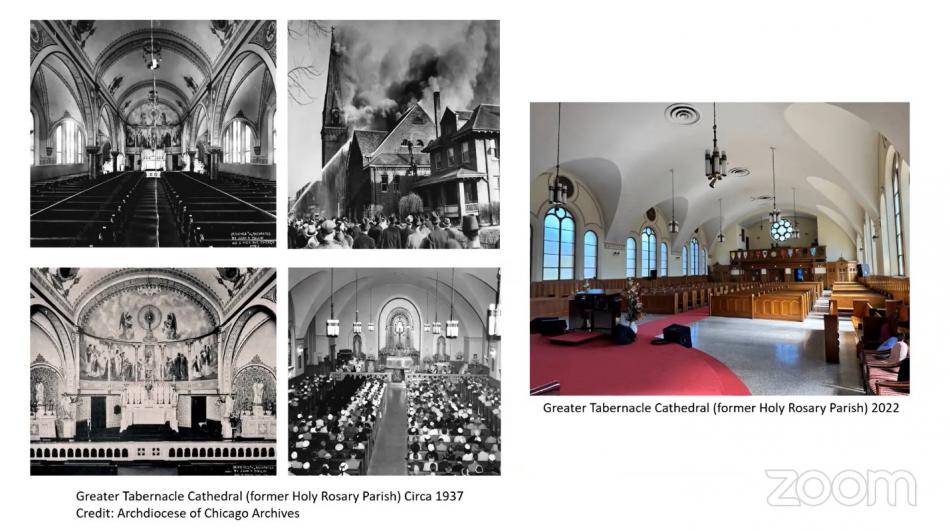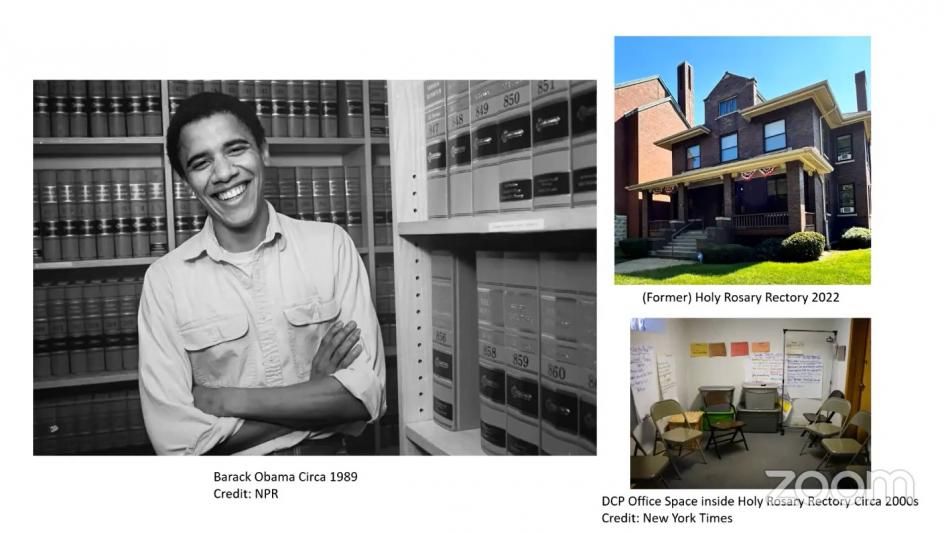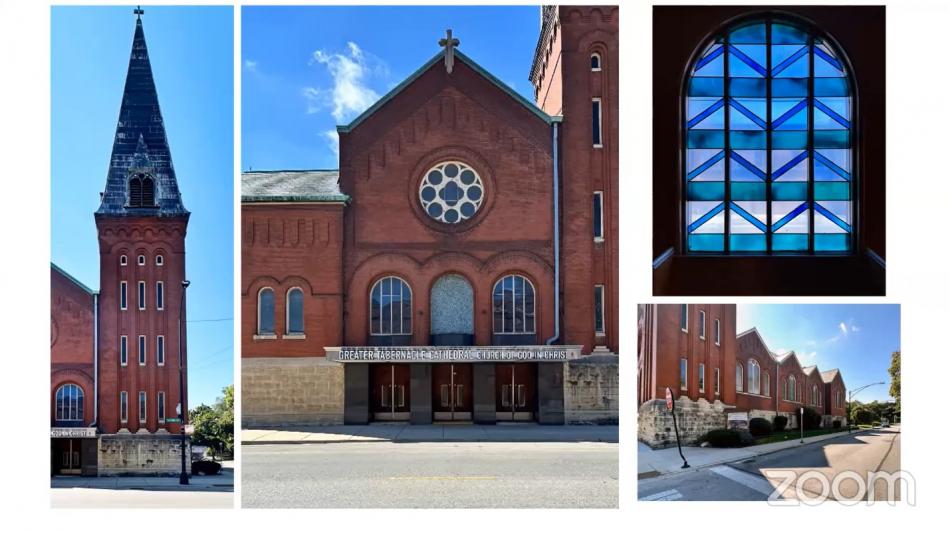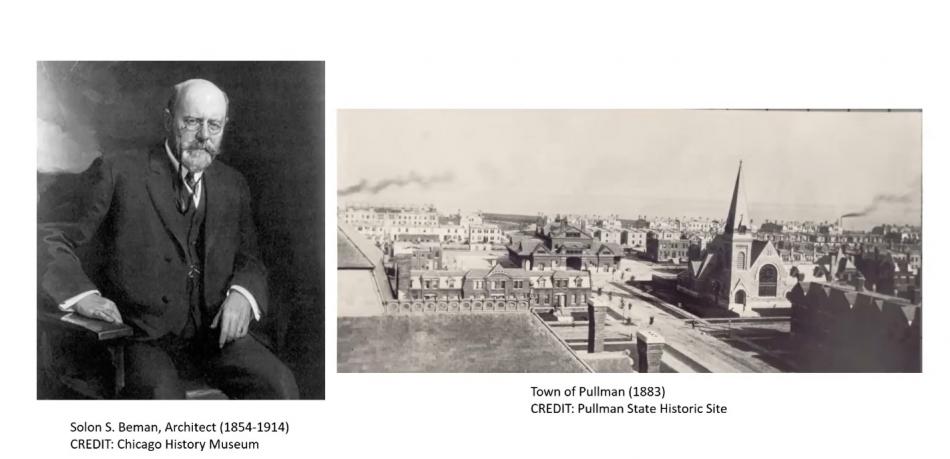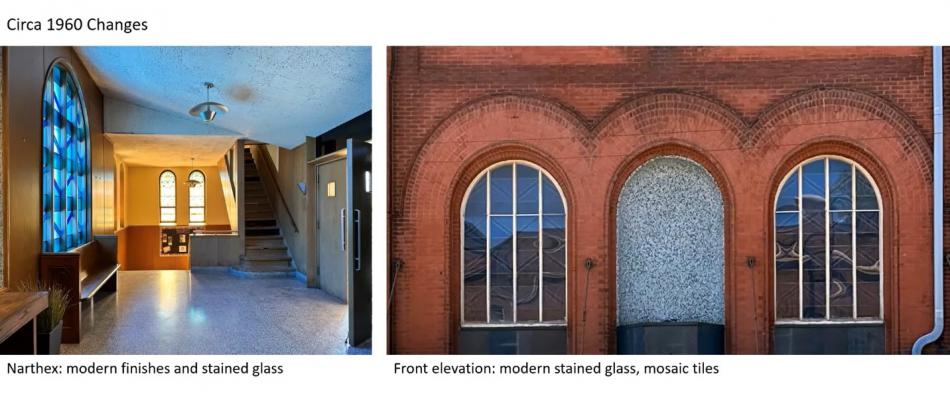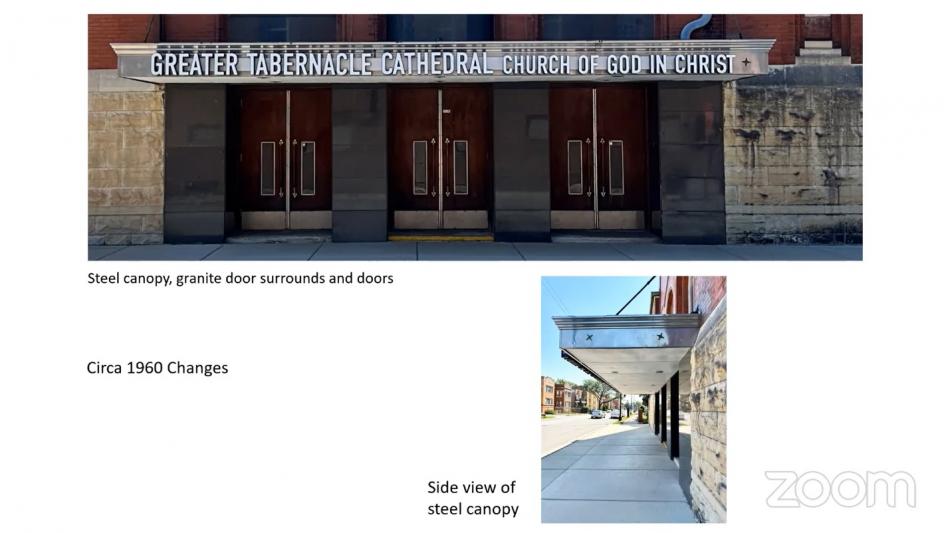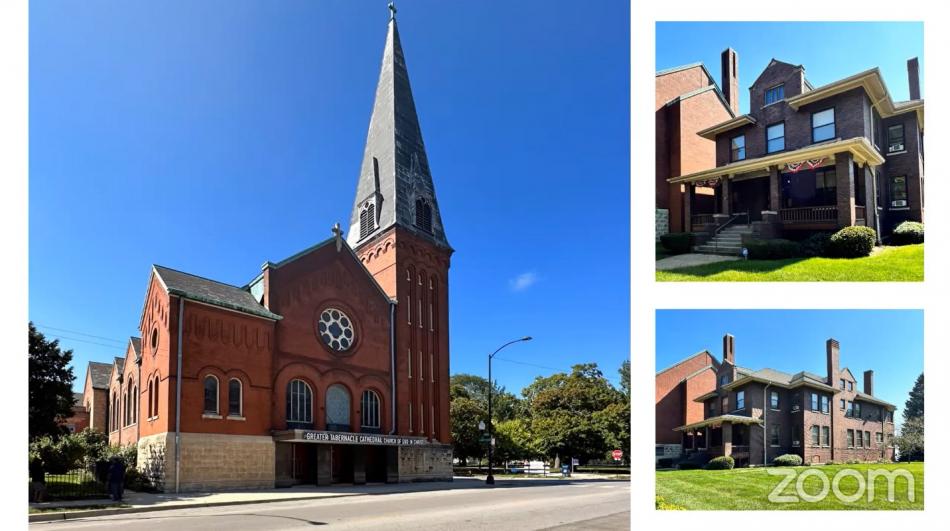The Commission on Chicago Landmarks has approved a preliminary landmark recommendation for the Greater Tabernacle Cathedral. Located at 11300 S. Dr. Martin Luther King Jr. Drive, the church was originally the Holy Rosary Catholic Church when it opened in 1890.
Meeting Criterion 1 for heritage, the church traces its origins back to the early settlement of Roseland and Pullman, which were linked economically and socially. The church was the first English-speaking Catholic parish in the area, serving a congregation of mostly Irish immigrants. The congregation flourished with hundreds of member families and by 1916 celebrated being free of their debts.
On March 4th, 1937, fire devastated the church and destroyed everything except for the exterior building structure and the bell tower, including all the interior artwork and ornamentation. The congregation rebuilt the church after the fire and the building has gone on to hold a total of three congregations - Holy Rosary Catholic Church, New Day Ministry International, and Greater Tabernacle Cathedral (since 2016).
The building also meets Criterion 3 for its association with a significant person. From 1985-1988, Barack Obama led the Developing Communities Project as its executive director from its organization headquarters in the rectory of Greater Tabernacle Cathedral. As a faith-based organization, DCP was incorporated as a non-profit in 1986 under Obama’s lead and established programming to support the local community through job training, college preparation tutoring, and tenants' rights organizing for the Altgeld Gardens housing projects.
With its Romanesque Revival design, the church also meets Criterion 4 for its exemplary architecture. Designed by Solon S. Beman, the church is monumental yet restrained as it features limited ornamentation and its exterior is dominated by projecting cross gable roofs, monumental arched windows, and the juxtaposition between the red brick exterior and limestone base. The church is completed with a commanding bell tower that stands 85 feet tall.
In contrast to the design of the church, the rectory sits at the western end of the complex with an austere design that is absent of ornamentation. Rectangular in plan and two stories in height, the building is crowned by a cascading hipped roof and accentuated with prominent gable dormers and shed dormers. Clad in a dark brown brick, the facade is limited in ornamentation to just inset limestone blocks at gable ends, peaks of gabled dormers, and at gabled dormers as well as the simple relief work below the crown of chimneys on the west and south elevations.
For its standing as a work of Solon S. Beman, the church also meets Criterion 5 for its status as a work of a significant architect. Beman was a renowned late 19th century and early 20th century architect who designed over 1,300 buildings in the company town of Pullman alone. Other notable works include the Fine Arts Building, Greenstone United Church, and many others.
As it stands today, the church clearly retains its historic, architectural, and aesthetic integrity, allowing it to meet the separate Integrity Criterion. With staff recommending 1890 as its period of significance, changes from the 1960s will be outside of the period of significance as they aren’t consistent with the 19th century Romanesque qualities of the design by Beman. Changes include the update to the narthex which brought new interior finishes and new windows with mosaic tiles above the windows. The entrance also was revised with a stainless-steel canopy added alongside the installation of new doors and granite returns.
With the preliminary landmark recommendation approved, the building’s significant features would be all exterior elevations including rooflines of the church and rectory buildings. Next steps include further review by landmarks staff before the commission votes on a final landmark recommendation to send the proposed designation to City Hall. There, the Committee on Zoning and City Council would need to vote on it before the church and rectory officially become Chicago landmarks.




